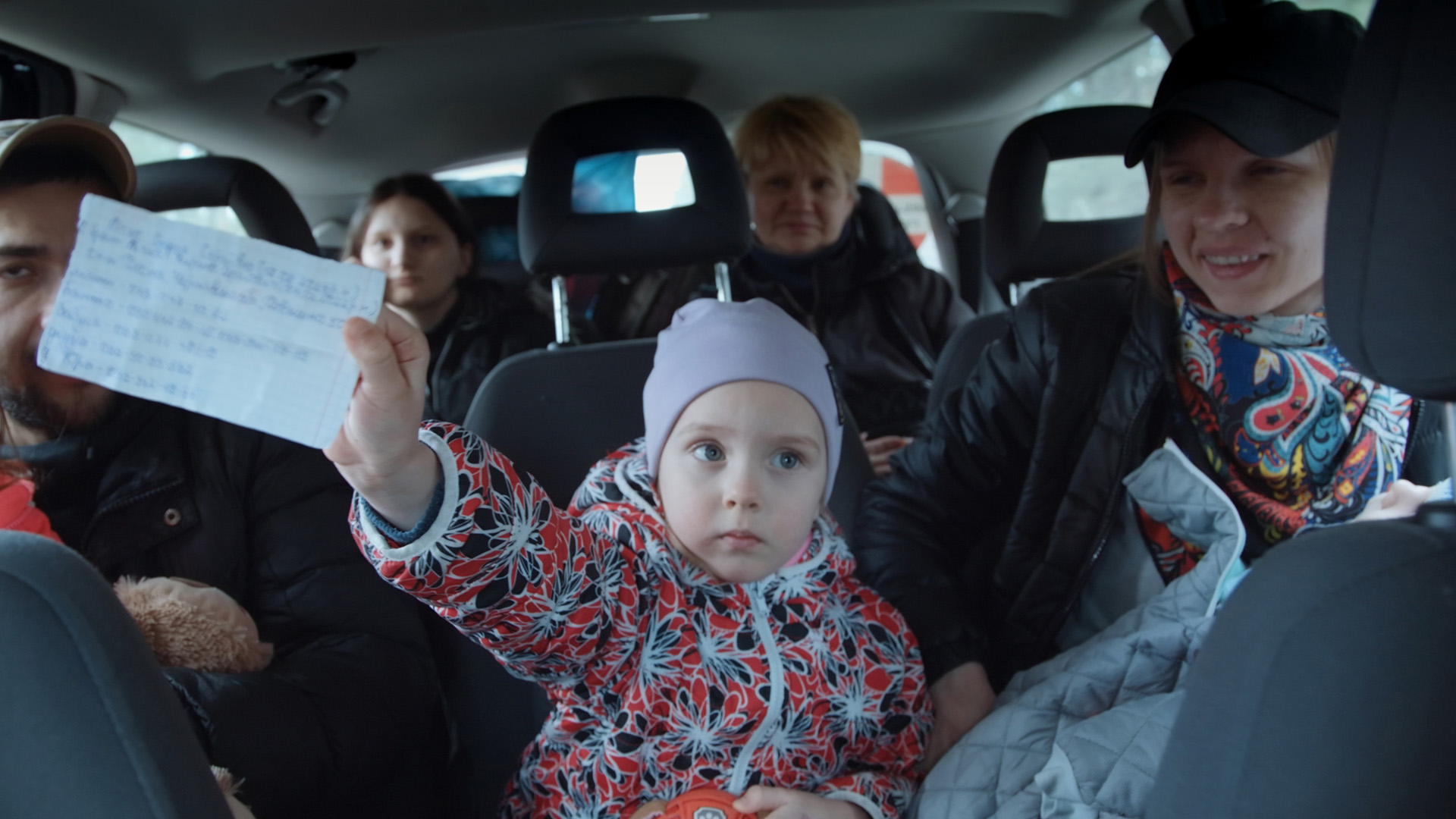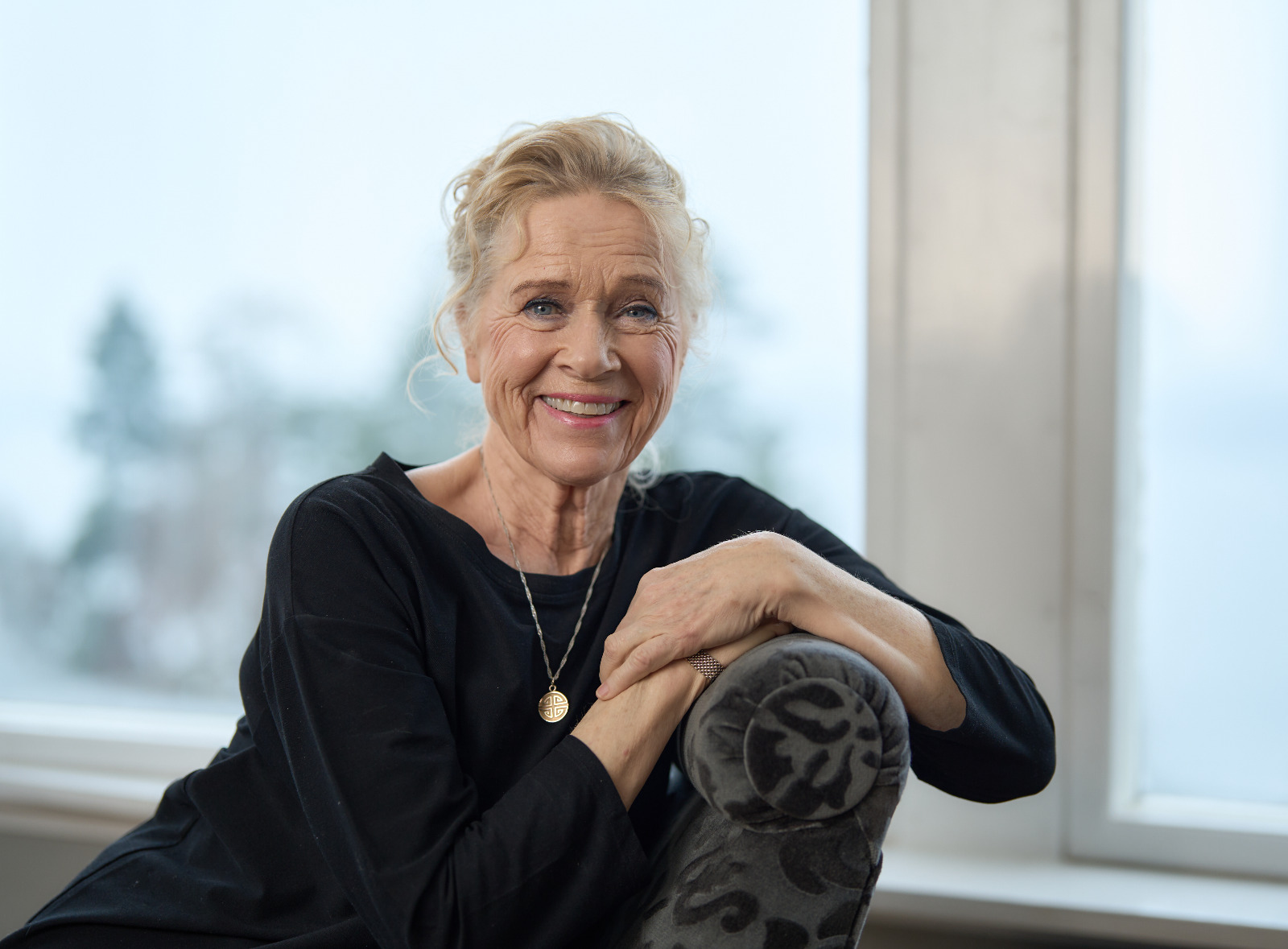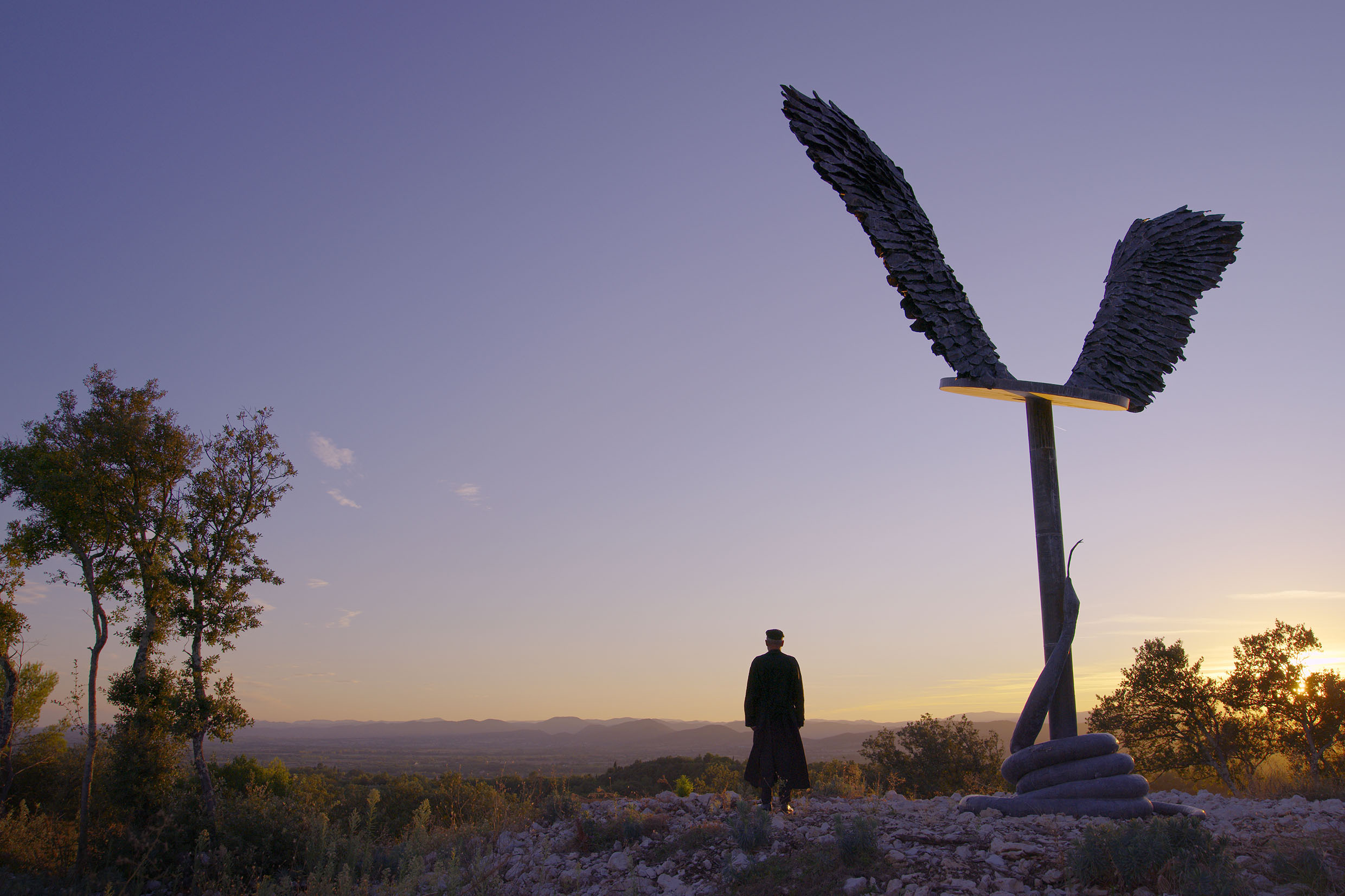There have been plenty of films made about the war in Ukraine, and yet there remain new and fascinating ways of covering the events of this conflict, but also the human condition in general. With In the Rearview, screening as part of the Cannes ACID sidebar, we travel with Polish filmmaker Maciek Hamela, his cameraperson, and a car load of displaced persons headed from the more volatile regions of Ukraine to safer spaces inland or over the border. Much of the film is framed with the passengers facing the front of the car, forming a constant vignette where the faces of the individuals change but the sense of both relief and despair is written on all them.
We hear stories of true horror mixed in with the banalities of everyday life, people opening up matter-of-factly to the appalling conditions they survived, while others are made emotional by seemingly trivial elements in contrast. Hamela holds the steering wheel both literally and aesthetically, but he allows the passengers to dictate where the story goes. The person in the driver’s seat merely keeps things moving forward.
On that front, there are plenty of times when an obvious route to safety is blocked due to ongoing military encounters or bridges are blown up moments before the car’s arrival, yet while there’s clear tension, there’s never any panic or protest from passenger or driver alike. For the most part, there’s a clear sense of simply living one’s best at a time of catastrophe. The stories are told in such an intimate setting that truly humanize the conflict in ways rarely presented.
POV spoke with Maciek Hamela prior to the In the Rearview’s Cannes premiere.
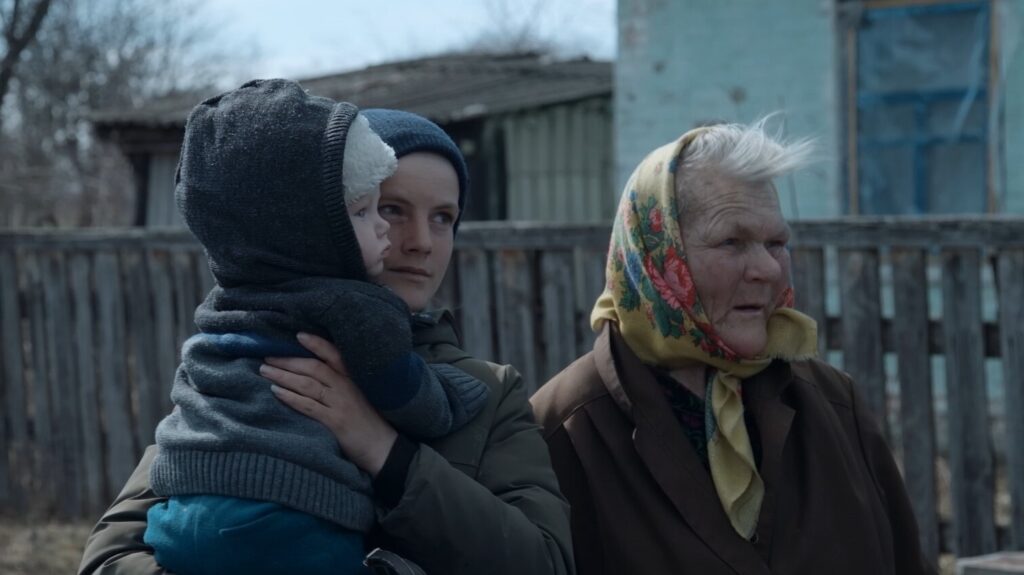
POV: Jason Gorber
MH: Maciek Hamela
The following has been edited for clarity and concision
POV: At what stage did you decide you’d be not only the director, but literally the person we see in the driver’s seat?
MH: That was a very pertinent question that we asked ourselves in the editing process. There’s a number of films we could have made, but we wanted to focus on the people and on their stories. I felt that we could tell the story of how volunteer networks are formed, how international it is, how many people are involved, and [questions like] “Does my mother know where I am?” But that [approach] would take the focus off the stories of the Ukrainians, and since I am the connecting character in all of them, it would probably take the weight out of their individual stories. Each story is unique. We tried to give the spectator at least a half a minute of possible reflection in each of these stories. It was impossible to combine that with the larger narrative, so that’s how the idea crystallized for the structure of the film.
From the get go I knew the passengers were going to be the main focus, and this was why we set up the camera the way we set it up. I actually didn’t shoot at all at the very start of my volunteering to drive. I turned down a lot of offers, including an offer from CNN to work for their investigation unit. I also left a documentary shoot I started on the Belarussian border with Poland and I was just focused on driving people. I didn’t want to do any work related to film for the first weeks. Then I invited a friend DOP to help me drive the car during the night and we took the camera. That’s how it all started.
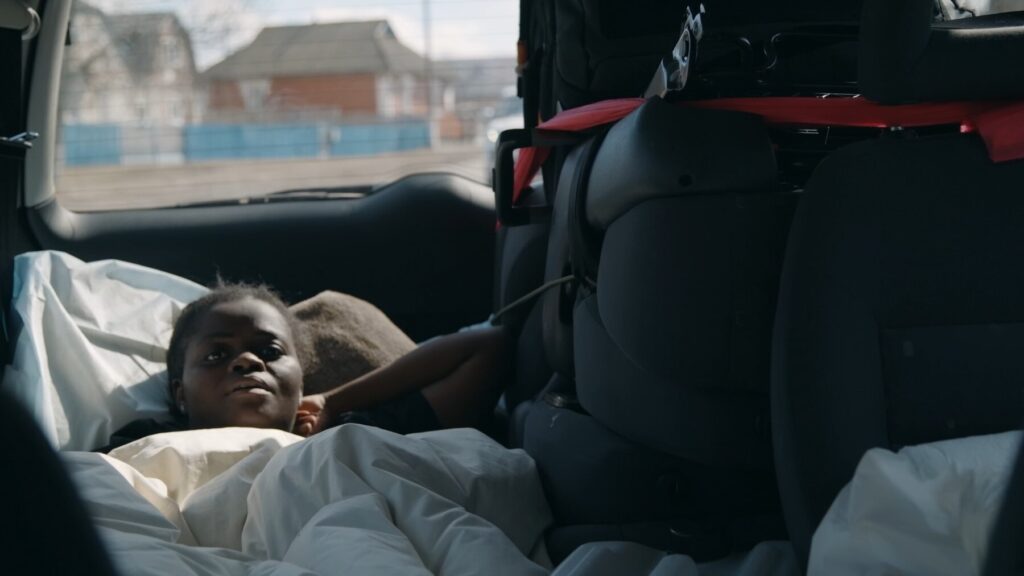
POV: Your film has interviews with people, but you’re never overtly interviewing them. It’s a subtle way of allowing us into these people’s lives by just letting them talk.
MH: I quickly realized that people had this inner need to share their experiences with me. I was in this very weird, unique situation where I was a foreigner, so people felt the necessity to explain things. I might not understand everything because I’m a foreigner, but I spoke their language. I spoke Russian with most of them—most of the people I was driving, their first language was Russian, actually. They felt free to speak with me, they could express their thoughts very accurately and be understood, but at the same time, they felt that I’m somebody who can’t do them any harm.
This ‘situation of confession’ installed itself naturally, so there was often no need to ask questions. Of course, we had moments with people who did not want to share their lives, but it was a minority. Natasha, the last character in the film, was traumatized from what she went through in Mariupol. When I called her before I picked her up and told her there is a camera, she said, “Ok, but I’m not going to tell you anything.” And I told her, “That’s ok. You don’t have to tell me anything.” We never put people in a situation where they felt they needed to do something to get evacuated.
POV: You told before you picked them up there was a camera, and it was obviously entirely voluntary about whether you turned on the camera, I assume? They knew before they stepped into your car that there was a camera, correct?
MH: Yes, the camera was not fixed. The camera was handheld at all times by a human. At any time you could say “no” and he would put the camera down. That was one important part of the whole thing. We didn’t put the cameras around the car and say, “This is all filmed and you don’t know when it’s filming or not.” There was a human behind the camera—that was first and foremost the most important aspect. The second aspect was that we had the people sign the permission for the shoot only after we delivered them to the destination. Then they were absolutely free to sign it or not.
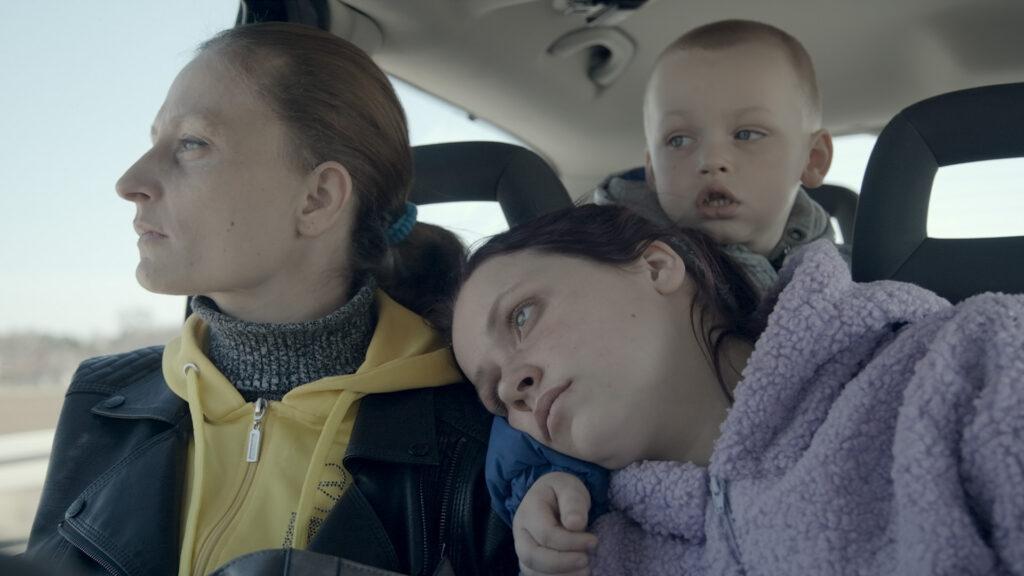
POV: Did people not sign it? Were there some people that you recorded all of the stuff and at the end they’re like, “I don’t want to be part of this”?
MH: There was one person who was very reluctant to sign it and we let him go. That’s completely normal.
POV: Inevitably, when you’re directing, you’re multitasking. You’re thinking about a thousand things all at once. You’re driving on roads where a bomb has taken out the bridge, you have children that you’re trying to drive—how much is your attention focused on what is good material for a story in a situation like this?
MH: My brain is well-adapted to these situations. When I was a student at the Sorbonne in Paris, I worked for three years as a guide for Russian tourists. This is how I polished my Russian. I was working in this really crappy company where they gave us three hotels, three pickups in the rush hour with fifteen minutes between them, and three hotels located in three different parts of Paris. I had to go around police, in bus lanes, and do illegal stuff just to be able to pick up these people in time and, at the same time, talk with those that I already had in the car and tell them about the monument we were passing.
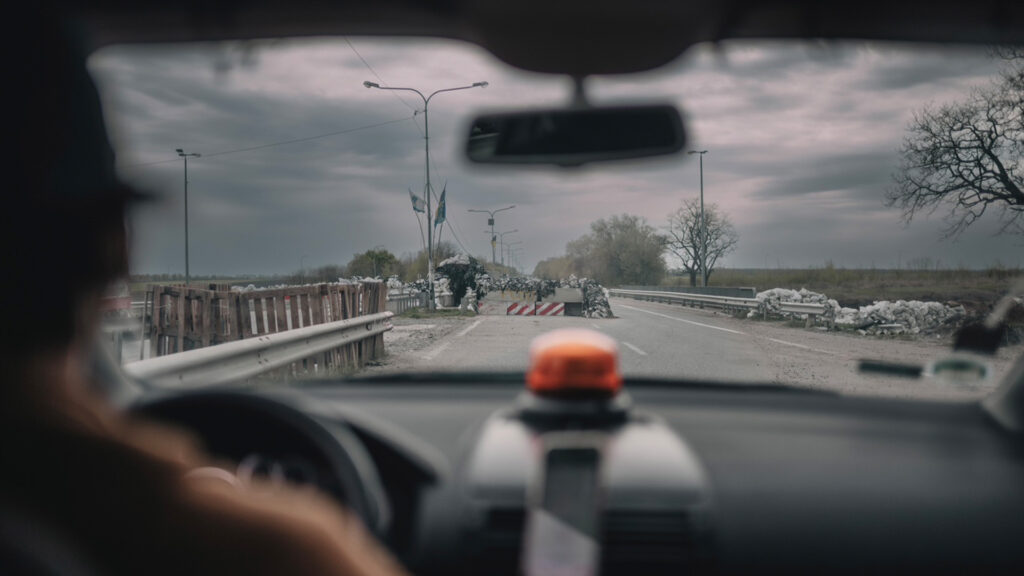
POV: You get a real sense of relief from the people and there are quiet moments when you are alone in the car and driving back over the border and into safety, and you’re thinking I’m going to go back in again. Can you talk about what those moments were like for you?
MH: They affected me on many layers. First of all, for a guy who doesn’t know anything about cars, I became an assistant car mechanic for professionals I had on the phone. That was one pragmatic effect. Of course, when driving, you have these thoughts of “Maybe it’s enough, maybe I shouldn’t, maybe I’m pushing my limits too far, maybe I’m getting used to things that I shouldn’t be getting used to.”
Bombing alarms, I got used to very quickly—I would not even react to them. We never went to the bomb shelters, even at night, I was so fatigued that I would not have the energy to look for a bomb shelter. I preferred to just put a mattress in the windows for some psychological protection and then sleep the few hours I had. You learn a lot about yourself, about how your rationale works, I had different DOPs that were driving with me, and they had different boundaries of their fears that I had to take into account. Definitely, I had this idea that maybe it’s enough, maybe I shouldn’t go. But then you get a phone call from somebody telling you that their wife is stranded somewhere and there is nobody who can pick her up and they’ve been calling around and she’s in a bad psychological state. You think, “Well, I’ll do another one.”
POV: Did you look at other films for inspiration, or is it simply the circumstance of this? The most simple connection is HBO’s Taxicab Confessions, in a funny way.
MH: There was a big question mark on the rigid form that we had: Will this carry a feature film? For this reason, I went back to some of the films I knew from the past, starting from Drive, which is a different film because we have a central character and not an amalgam of different stories. A film that I think really made me believe that our endeavor was possible, was the film Ten by Abbas Kiarostami. That’s one of my favourite films of his, and one of the most poignant films about the situation of women in Iran. It’s made with very simple means, and this film made me believe that we’d be able to make a film that will be enclosed in this car space.
POV: Was there ever a sense that maybe all you were doing was taking their testimony, that maybe you weren’t going to get a film out of this? How much pressure was there to make the film, or was that secondary to your mission of driving people to safety at all times?
MH: The idea was that the film was always secondary to the evacuation efforts. For example, I did not permit myself to slow down an evacuation just because we had to take some shots. This was very clear cut from the beginning. But very early on, I understood that this could be cinema, but that it would take a while to get there. And it did! I had to take some time off, stand back, catch some distance to come back to the editing room with Piotr [Oginski], my editor, and find the right proportions to make this film work, for it to not drag on for three hours. The first time we went into cinema to watch it, the film had a three hour running time.
POV: What makes a cinematic documentary versus one designed for the small screen? What does cinema do differently than a CNN report might do? What about this story benefits from the greater canvas, but also the greater time to craft the narrative?
MH: The big thing is getting the film out of its down-to-earth context. It becomes a film about humanity, reflexes, and not just this particular war. This was essential at the very last moment when we were getting rid of things that would add drama to the film, but would take out the metaphysical part.
POV: There’s so many little moments that for me are indelible, like how people are talking about rapes and murders while somebody else is worrying about the car smelling like cat shit. In life, both things are true.
MH: Both are horrific.




